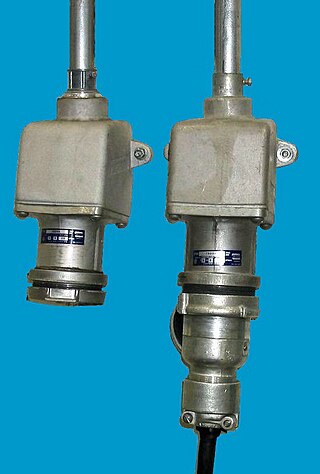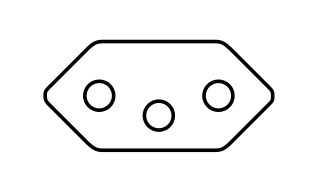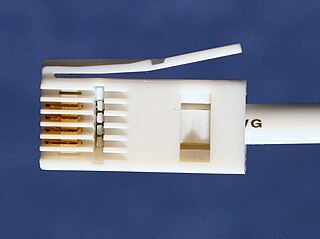
British Standards (BS) are the standards produced by the BSI Group which is incorporated under a royal charter and which is formally designated as the national standards body (NSB) for the UK. The BSI Group produces British Standards under the authority of the charter, which lays down as one of the BSI's objectives to:
Set up standards of quality for goods and services, and prepare and promote the general adoption of British Standards and schedules in connection therewith and from time to time to revise, alter and amend such standards and schedules as experience and circumstances require.

IEC 60320 Appliance couplers for household and similar general purposes is a set of standards from the International Electrotechnical Commission (IEC) specifying non-locking connectors for connecting power supply cords to electrical appliances of voltage not exceeding 250 V (a.c.) and rated current not exceeding 16 A. Different types of connector are specified for different combinations of current, temperature and earthing requirements. Unlike IEC 60309 connectors, they are not coded for voltage; users must ensure that the voltage rating of the equipment is compatible with the mains supply. The standard uses the term coupler to encompass connectors on power cords and power inlets and outlets built into appliances.

Schuko is a plug/socket system used in much of Europe and in many countries east of there. It is a registered trademark referring to a system of AC power plugs and sockets that is defined as "CEE 7/3" (sockets) and "CEE 7/4" (plugs). A Schuko plug features two round pins of 4.8 mm diameter for the line and neutral contacts, plus two flat contact areas on the top and bottom side of the plug for protective earth (ground). The socket has a predominantly circular recess which is 17.5 mm deep with two symmetrical round apertures and two earthing clips on the sides of the socket positioned to ensure that the earth is always engaged before live pin contact is made. Schuko plugs and sockets are symmetric AC connectors. They can be mated in two ways, therefore line can be connected to either pin of the appliance plug. As with most types of European sockets, Schuko sockets can accept Europlugs. Schuko plugs are considered a very safe design when used with Schuko sockets, but they can also mate with other sockets to give an unsafe result.

The Electricity Supply Board is a state owned electricity company operating in the Republic of Ireland. While historically a monopoly, the ESB now operates as a commercial semi-state concern in a "liberalised" and competitive market. It is a statutory corporation whose members are appointed by the government of Ireland.

AC power plugs and sockets connect devices to mains electricity to supply them with electrical power. A plug is the connector attached to an electrically-operated device, often via a cable. A socket is fixed in place, often on the internal walls of buildings, and is connected to an AC electrical circuit. Inserting the plug into the socket allows the device to draw power from this circuit.

Mains electricity by country includes a list of countries and territories, with the plugs, voltages and frequencies they commonly use for providing electrical power to low voltage appliances, equipment, and lighting typically found in homes and offices. Some countries have more than one voltage available. For example, in North America, a unique split-phase system is used to supply to most premises that works by center tapping a 240 volts transformer. This system is able to concurrently provide 240 volts and 120 volts. Consequently, this allows homeowners to wire up both 240 V and 120 V circuits as they wish. Most sockets are connected to 120 V for the use of small appliances and electronic devices, while larger appliances such as dryers, electric ovens, ranges and EV chargers use dedicated 240 V sockets. Different sockets are mandated for different voltage or maximum current levels.
In electricity supply design, a ring circuit is an electrical wiring technique in which sockets and the distribution point are connected in a ring. It is contrasted with the usual radial circuit, in which sockets and the distribution point are connected in a line with the distribution point at one end.

Industrial and multiphase plugs and sockets provide a connection to the electrical mains rated at higher voltages and currents than household plugs and sockets. They are generally used in polyphase systems, with high currents, or when protection from environmental hazards is required. Industrial outlets may have weatherproof covers, waterproofing sleeves, or may be interlocked with a switch to prevent accidental disconnection of an energized plug. Some types of connectors are approved for hazardous areas such as coal mines or petrochemical plants, where flammable gas may be present.
Electrical wiring in the United Kingdom is commonly understood to be an electrical installation for operation by end users within domestic, commercial, industrial, and other buildings, and also in special installations and locations, such as marinas or caravan parks. It does not normally cover the transmission or distribution of electricity to them.

The Europlug is a flat, non-rewirable two-pole, round-pin domestic AC power plug, rated for voltages up to 250 V and currents up to 2.5 A. It is a compromise design intended to connect low-power Class II appliances safely to the many different forms of round-pin domestic power socket used across Europe. However, it is not compatible with the rectangular-pin BS 1363 sockets found in Cyprus, Gibraltar, Singapore, Malaysia, United Arab Emirates, Hong Kong, Ireland, Malta and the United Kingdom. By the standard, Europlugs must be non-rewirable and must be supplied attached to a power cord; anything else is non-compliant.

IEC 60906-1 is an international standard designed "to provide a standard for a safe, compact and practical 16 A 250 V AC system of plugs and socket-outlets that could be accepted by many countries as their national standard, even if not in the near future." The standard was originally published by the International Electrotechnical Commission in 1986; the current edition is ed2.0 published in 2009. Although it is almost identical to the Swiss SEV 1011 T12 plug for 10 A 250 V a.c. standardised in 1937, its dimensions are slightly different and its polarization is flipped. As of July 2014, only South Africa has introduced a standard based closely on IEC 60906-1. Brazil used it as the basis for its NBR 14136 standard, but this is not compatible with IEC 60906-1. In 2017 the European Union (EU) published recommendations advising against the harmonisation of domestic plug and socket systems in the EU.

As a former British colony and territory, technical standards in Hong Kong of today has been largely influenced by that of the United Kingdom, with some exceptions due to local and practical considerations.

AS/NZS 3112 is the harmonised Australian and New Zealand standard for AC power plugs (male) and sockets (female). The standard is used in Australia, New Zealand, Fiji, Tonga, Solomon Islands, Papua New Guinea and several other Pacific island countries, plus in Argentina and China. The International Electrotechnical Commission (IEC) "world plugs" Web site calls this plug Type I.

British telephone sockets were introduced in their current plug and socket form on 19 November 1981 by British Telecom to allow subscribers to connect their own telephones. The connectors are specified in British Standard BS 6312. Electrical characteristics of the telephone interface are specified by individual network operators, e.g. in British Telecom's SIN 351. Electrical characteristics required of British telephones used to be specified in BS 6305.

South African National Standard 164: Plugs and socket outlets for household and similar purposes for use in South Africa is the South African Bureau of Standards' standard for domestic AC power plugs and sockets. As a former British colony, South Africa's electricity standards are of British derivation, and it uses 220/230 V at 50 Hz AC.
A number of standards prevail in North America, or parts of it, for trailer connectors, the electrical connectors between vehicles and the trailers they tow that provide a means of control for the trailers.

Plugs and sockets for electrical appliances not hardwired to mains electricity originated in the United Kingdom in the 1870s and were initially two-pin designs. These were usually sold as a mating pair, but gradually de facto and then official standards arose to enable the interchange of compatible devices. British standards have proliferated throughout large parts of the former British Empire.
There are approximately 20 types in common use around the world, such as AC power plugs and sockets, and many obsolete socket types which are still found in older buildings.
CEE 7 is a standard for alternating-current plugs and sockets. First published in 1951 by the former International Commission on the Rules for the Approval of Electrical Equipment (IECEE), it unified standards produced by several continental European countries. The 2nd edition was published in 1963 and last updated in March 1983. It remains available from the IEC, but they state that "this standard shall not be used alone, it is to be used in addition to IEC 60884-1".















